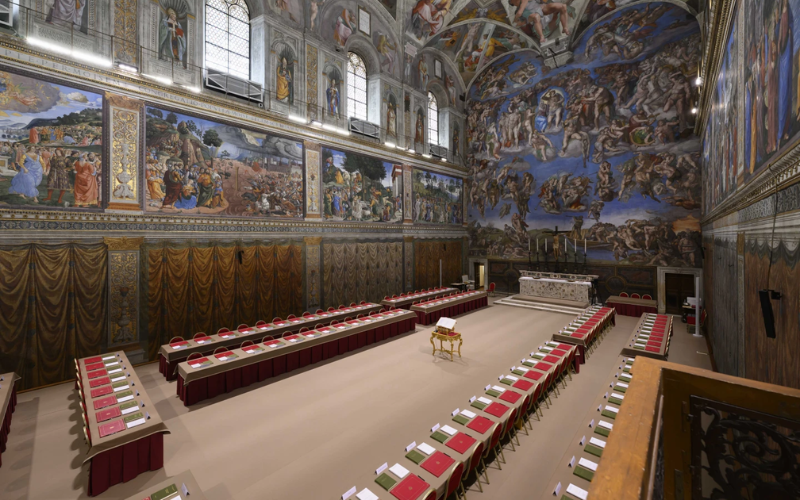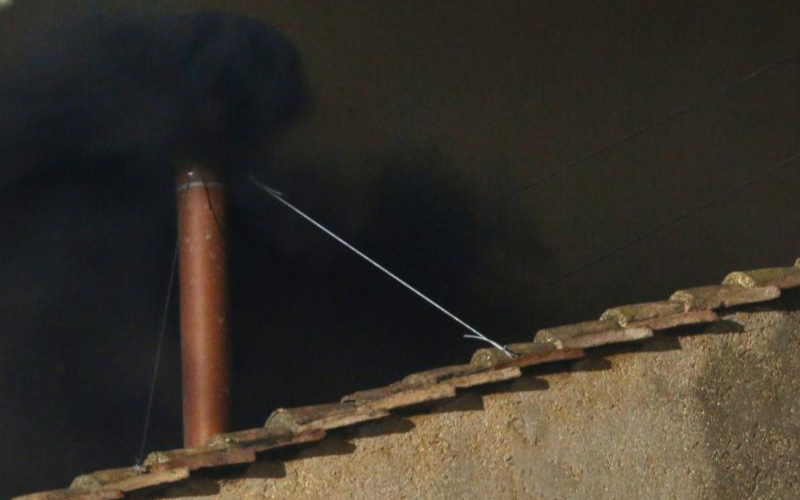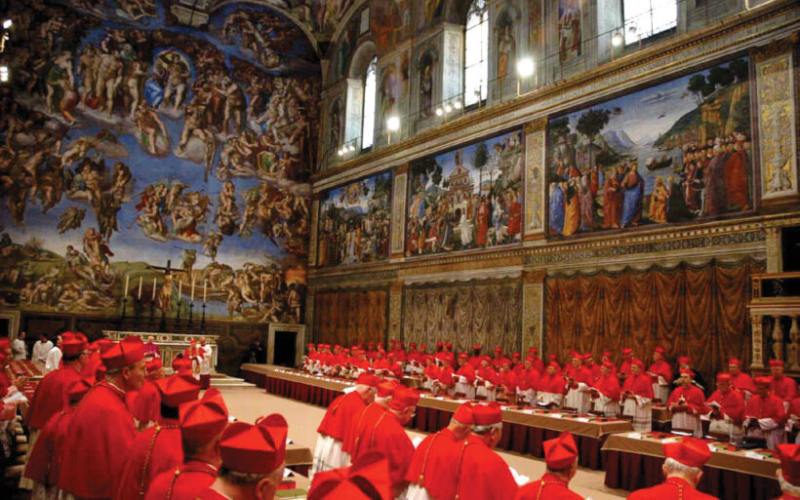Cardinals pray before the beginning of the conclave in which Cardinal Joseph Ratzinger was elected as Pope [Courtesy/studentnewsdaily]
The Roman Catholic Church will carry out one of its most secretive and sacred traditions: the papal conclave.
It all starts with a solemn Holy Mass, led by the Dean of the Sacred College of Cardinals, Cardinal Giovanni Battista Re, at St Peter’s Basilica.
The Mass, titled “Pro Eligendo Romano Pontifice” (For the Election of the Roman Pontiff), seeks divine guidance as the Cardinals prepare to elect a new pope.
Only Cardinals under the age of 80 are eligible to vote, and this time, 133 of them will take part.
In the afternoon, the electors gather at the Pauline Chapel in the Apostolic Palace before making their way to the Sistine Chapel.
They begin by praying the Litany of the Saints and chanting the traditional hymn Veni Creator Spiritus (Come, Holy Spirit), calling on divine inspiration.
Archbishop Diego Ravelli, the Master of Papal Liturgical Celebrations, presides over this sacred moment.
The Cardinals then hand over their devices and enter the Sistine Chapel in a solemn procession.
There, they each take an oath to faithfully fulfill their role if elected and vow to maintain strict secrecy.
Once the doors are sealed with the dramatic declaration “Extra Omnes!” (everyone out), only the Cardinal electors remain inside.
Interestingly, both the Dean and Sub-Dean of the Sacred College are over 80 and therefore ineligible to participate.
Leadership of the conclave falls to the most senior eligible Cardinal, Carlos Osoro Sierra.

Additionally, 90-year-old Cardinal Raniero Cantalamessa was chosen by the College to offer spiritual guidance during the election process.
Sealed off from the world, even the medical staff and meal servers who enter must swear an oath of silence.
A final meditation is delivered to the electors before voting begins. On the first day, only one vote is cast.
From the second day onward, four ballots are held daily, two in the morning and two in the afternoon.
Here’s the part that captivates the world: The smoke signal.
After each vote, ballots are burned. Black smoke means no pope has been chosen.
White smoke means a new pope has been elected.
The chemical mix used in the burning process ensures the color is unmistakable: black smoke is created with potassium perchlorate, anthracene, and sulphur; white smoke with potassium chlorate, lactose, and pine rosin.

If no candidate gets the required two-thirds majority after three days of voting, a one-day pause allows for prayer and consultation.
After seven more unsuccessful rounds, another break is called.
During the entire process, the Cardinals live in isolation at the Vatican’s Domus Sanctae Marthae (House of St Martha).
And when a new pope is finally chosen? The Sistine Chapel chimney releases that iconic puff of white smoke.
Moments later, the world hears the historic words from the balcony of St Peter’s Basilica: “Habemus Papam”, meaning “We have a Pope!”
Cardinal Proto-Deacon, the longest-serving cardinal deacon, Cardinal Domonique Mamberti, will announce the name of the new pope at the balcony after saying, “we have a new pope!”


